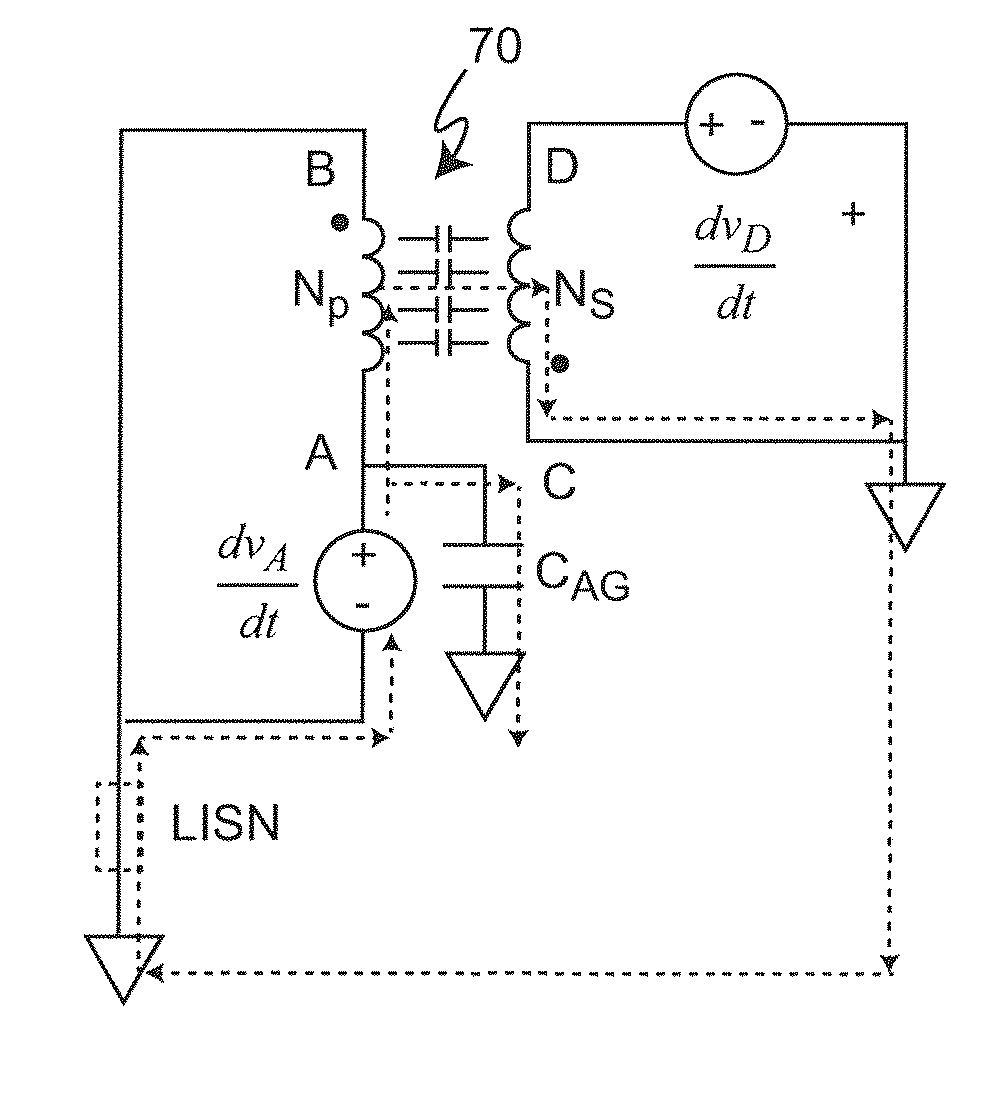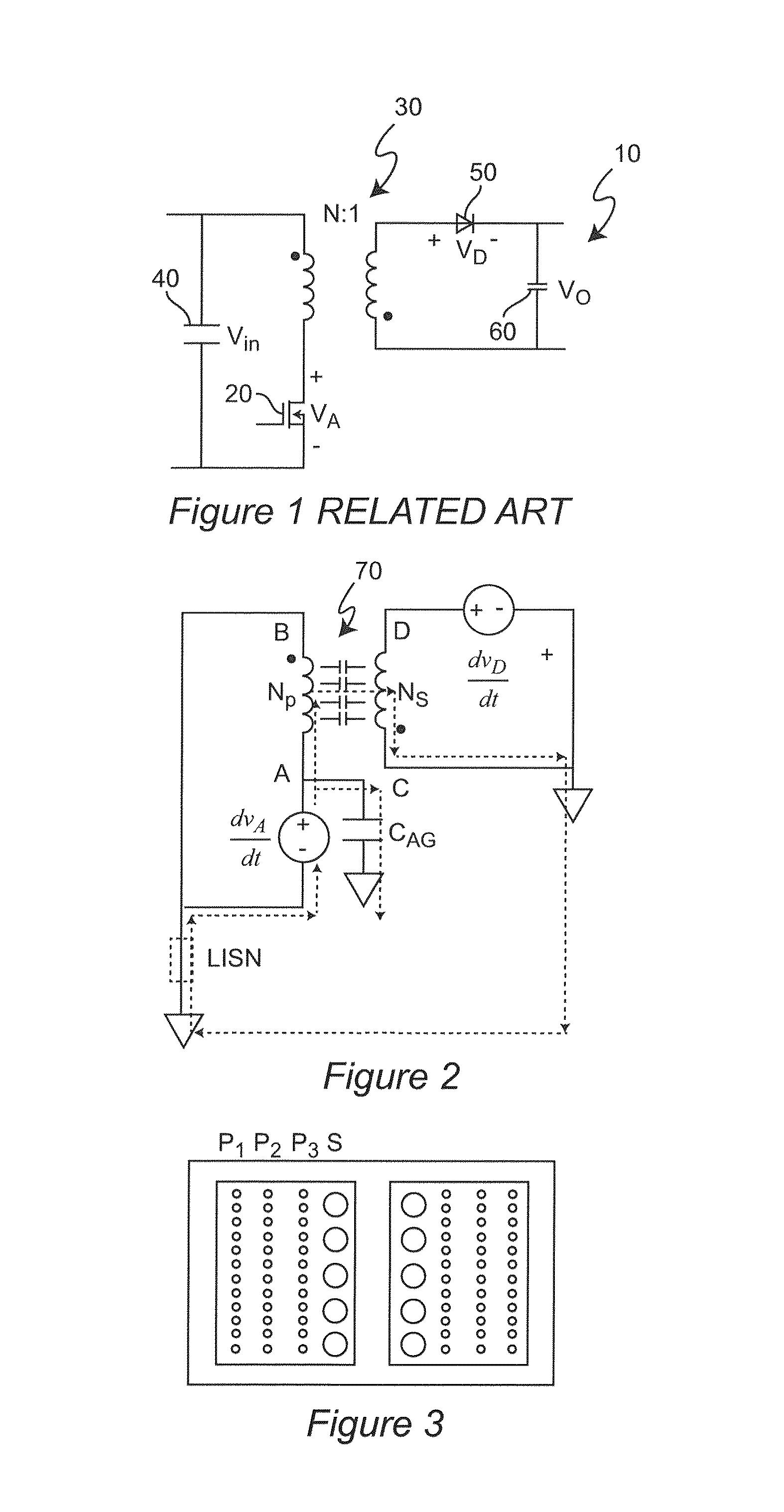Transformer Shielding for Common Mode Noise Reduction in Isolated Converters
a converter and transformer technology, applied in the field of transformer shielding for common mode noise reduction in isolated converters, can solve the problems of inherently producing noise, switching noise generally contains an unpredictable frequency range, incorrect operation, etc., and achieve the effects of reducing or eliminating the propagation reducing or eliminating the effect of avoiding transmission of common mode noise, and reducing or eliminating conductive common mode nois
- Summary
- Abstract
- Description
- Claims
- Application Information
AI Technical Summary
Benefits of technology
Problems solved by technology
Method used
Image
Examples
Embodiment Construction
[0030]Referring now to the drawings, and more particularly to FIG. 1, there is shown a schematic diagram of an exemplary so-called flyback topology power converter 10. The flyback topology is illustrated as being an extremely simple and widely used DC / DC power converter topology that uses a transformer for isolation between input and output sides as is done in many other known power converter topologies. Therefore, a flyback topology will be used to explain the invention; in view of which, application to all other known or foreseeable topologies using a transformer will be evident to those skilled in the art. However, it is to be understood that no particulars of any illustration of any flyback topology circuit in any Figure is admitted to be prior art in regard to the present invention since the depictions thereof are arranged to facilitate conveyance of an understanding of the present invention.
[0031]The flyback power converter topology operates by using a switch 20 in series with...
PUM
| Property | Measurement | Unit |
|---|---|---|
| Angle | aaaaa | aaaaa |
| Length | aaaaa | aaaaa |
| Ratio | aaaaa | aaaaa |
Abstract
Description
Claims
Application Information
 Login to View More
Login to View More - R&D
- Intellectual Property
- Life Sciences
- Materials
- Tech Scout
- Unparalleled Data Quality
- Higher Quality Content
- 60% Fewer Hallucinations
Browse by: Latest US Patents, China's latest patents, Technical Efficacy Thesaurus, Application Domain, Technology Topic, Popular Technical Reports.
© 2025 PatSnap. All rights reserved.Legal|Privacy policy|Modern Slavery Act Transparency Statement|Sitemap|About US| Contact US: help@patsnap.com



